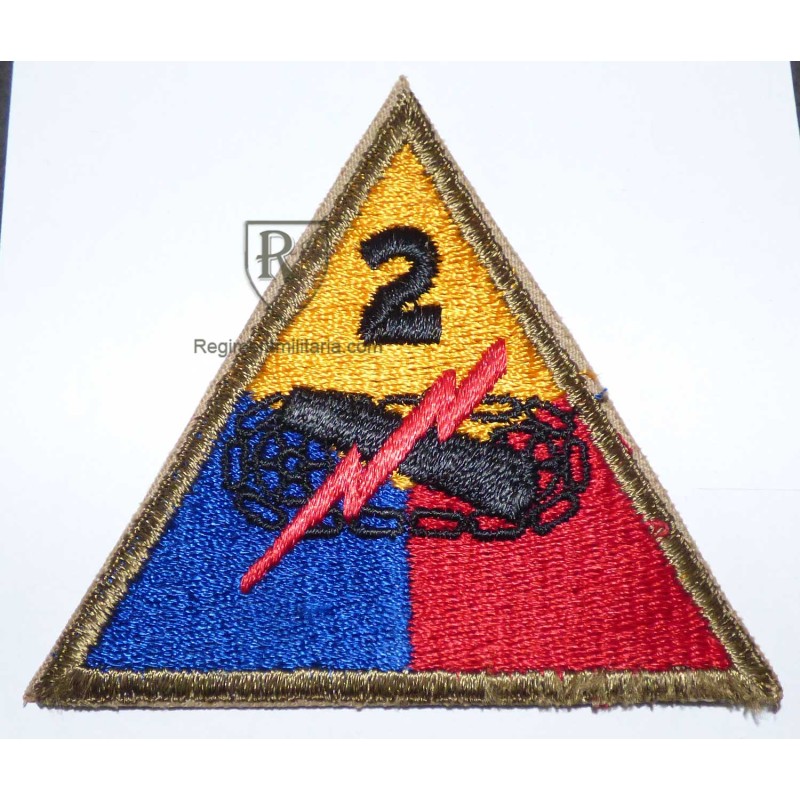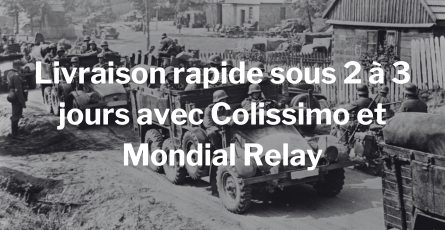
Reference: F2E376
Banner

Banner




2d Armored Division Patch
 Garanties sécurité
Garanties sécurité
(à modifier dans le module "Réassurance")
 Politique de livraison
Politique de livraison
(à modifier dans le module "Réassurance")
 Politique retours
Politique retours
(à modifier dans le module "Réassurance")
2d Armored Division Patch. original, WW2. Elements of the division were among the first U.S. military to engage in offensive ground combat operations in the European and Mediterranean theater during World War II. The 2nd Armored Division, now commanded by Major General Ernest N. Harmon, served in North Africa along with the 1st Armored Division. They were part of the Western Task Force of Operation Torch, which landed at Casablanca in French Morocco on November 8, 1942. The remainder of Torch's American component were the 1st, 3rd, 9th and 34th Infantry Divisions. However, the 2nd Armored Division did not see much action in North Africa and instead remained in French North Africa on garrison and training duties. In April 1943 Major General Harmon relinquished command of the division to Major General Hugh Joseph Gaffey. Training in amphibious operations began in preparation for an amphibious landing at Sicily. As the reserve force of the Western Task Force of Operation Husky, codename for the Allied invasion of Sicily, the division landed on July 10, 1943, in support of the 1st Infantry Division at the Battle of Gela. Afterwards, the division next went into action in the second landing at Licata, Sicily on July 21 following the 3rd Infantry Division's better-known earlier landing on July 10. The 2nd Armored, operating closely with paratroopers of the 82nd Airborne Division, then fought through to the Sicilian capital of Palermo. Along the way the 2nd Armored Division captured thousands of Italian prisoners of war (POWs). The fighting in Sicily came to an end on August 17, with the 2nd Armored Division having sustained relatively light casualties in the brief campaign, where it had gained its first Medal of Honor of World War II, belonging to Sergeant Gerry H. Kisters. During the campaign the division came under the command of the U.S. Seventh Army, under Lieutenant General George S. Patton, who had been a former commander of the division. Soon afterwards the 2nd Armored Division was sent to England, in preparation for the Allied invasion of Normandy, and remained there until June 1944. In April the division received a new commander, Major General Edward H. Brooks, a decorated veteran of World War I, replacing Major General Gaffey. The 2nd Armored Division landed at Omaha Beach in Normandy on June 9, 1944, three days after the initial Normandy landings, and operated in the Cotentin Peninsula, later forming the right flank of the Operation Cobra assault. The division encircled the 2nd SS Panzer Division Das Reich and the 17th SS Panzergrenadier Division Götz von Berlichingen around Roncey, and destroyed most of their armored equipment. At La Chapelle, a 2nd SS Panzer column was attacked at point blank range by 2nd Armored Division artillery. Over the course of two hours American artillery fired over 700 rounds into the column. The Germans suffered the loss of 50 dead, 60 wounded and 197 taken prisoner; material losses included over 260 German combat vehicles destroyed. Beyond the town, the 2nd Armored engaged another column, killing 1,150 German soldiers and destroying an additional 96 armored combat vehicles and trucks.[9] The U.S. 2nd Armored Division destroyed 64 German tanks and 538 other German combat vehicles during Operation Cobra, while itself losing 49 tanks. The 2nd Armored Division inflicted over 7,370 casualties on the Germans, while suffering 914 casualties of their own. This is approximately an eightfold disparity. The 2nd Armored blunted Operation Lüttich, the German counterattack on Avranches, then raced across France with the rest of the Third Army, reaching the Albert Canal in Belgium on September 8. On September 18 it crossed the German border near Sittard and took up defensive positions near Geilenkirchen. On October 3, the division, now commanded again by Major General Harmon, launched an attack on the Siegfried Line from Marienberg, broke through, crossed the Wurm River, seized the town of Puffendorf on November 16, and Barmen on November 28.
Reference: F2E376
Reference: ALG171
Reference: IND264

2d Armored Division Patch
check_circle
check_circle